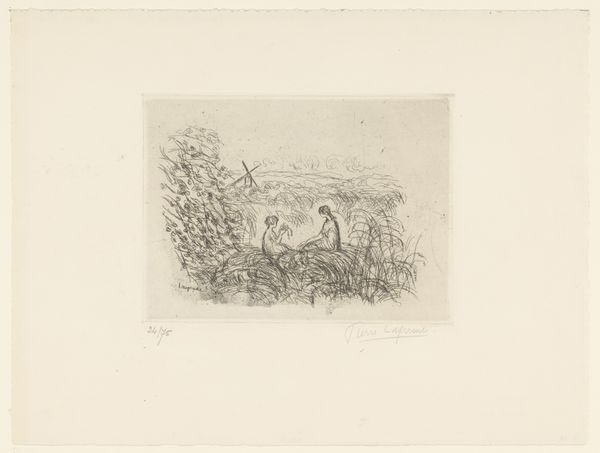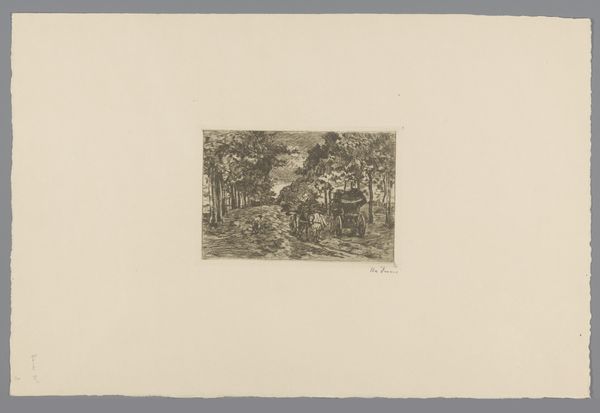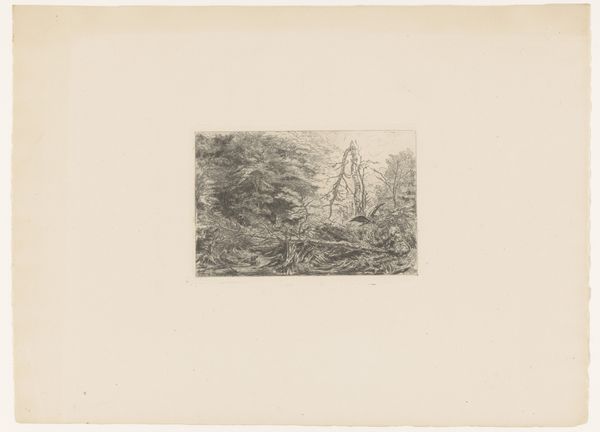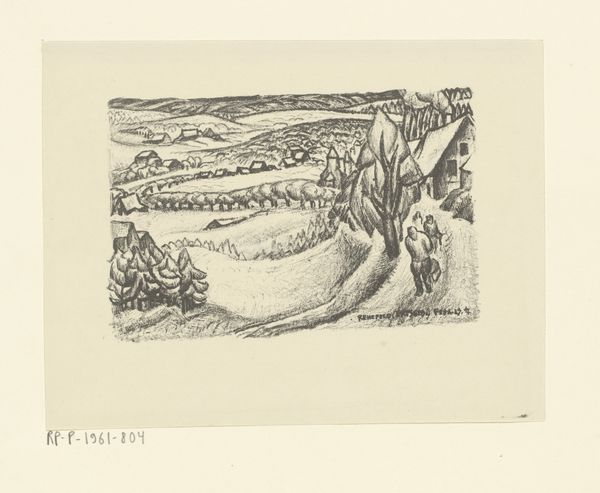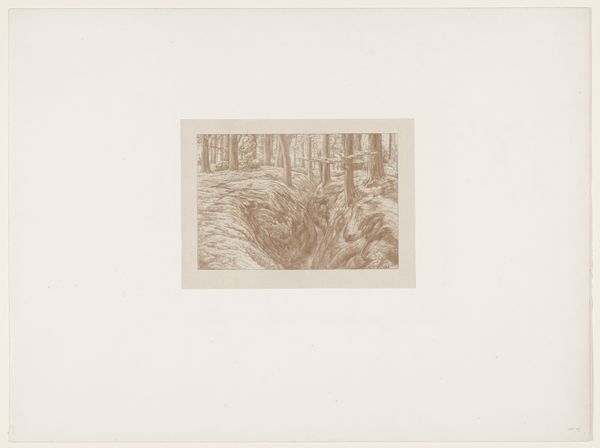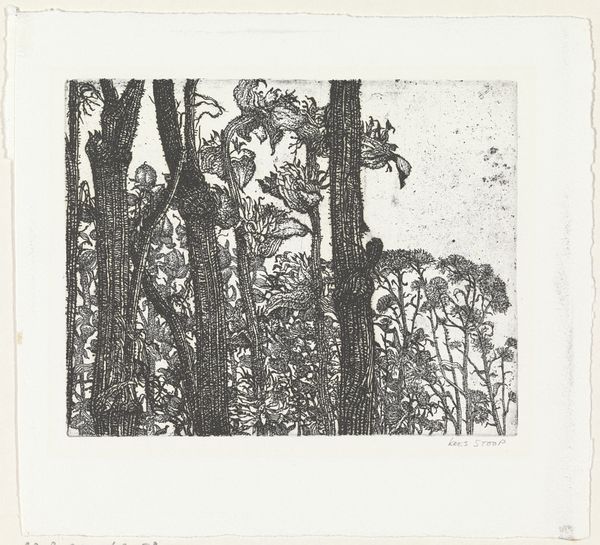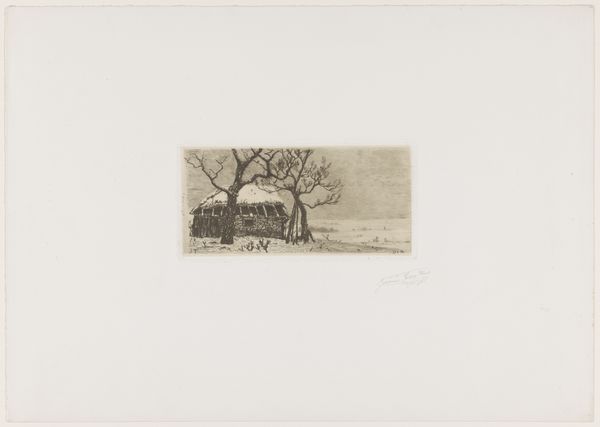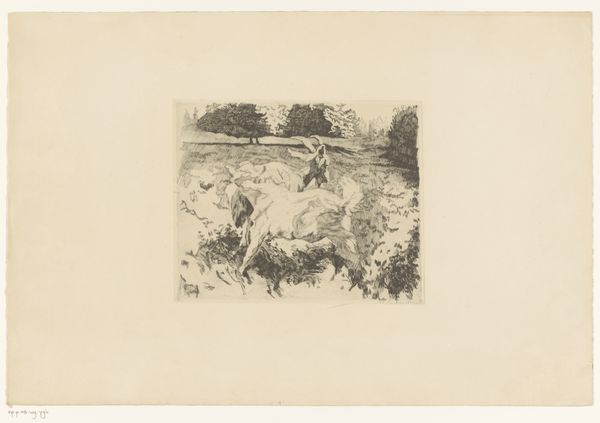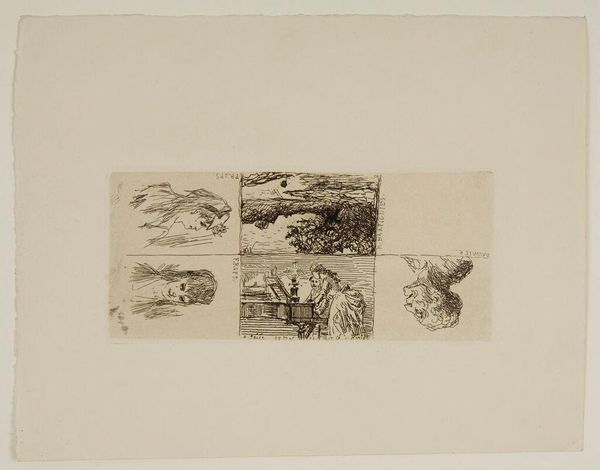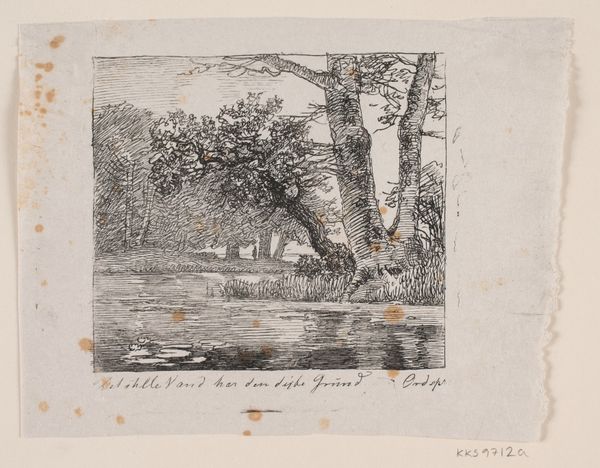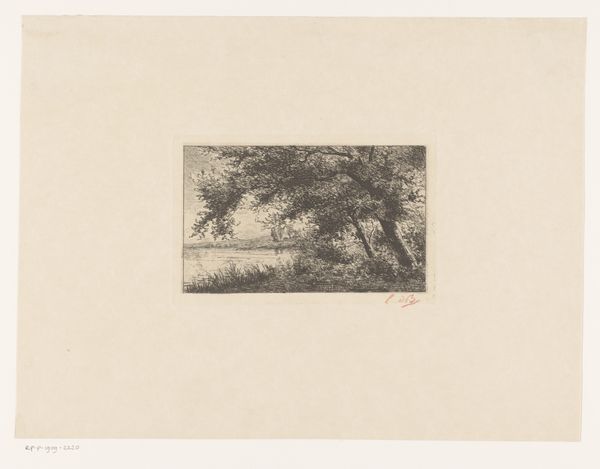
drawing, print
#
pencil drawn
#
drawing
# print
#
landscape
#
figuration
Dimensions: 79 mm (height) x 99 mm (width) (billedmaal)
Editor: So, this is "Syngende Drossel," or "Singing Thrush" by Waldemar Bøhme, made between 1848 and 1926. It’s a pencil drawing and print. There’s such detail in the bird and the trees. What strikes you about it? Curator: The emphasis on pencil drawing and its eventual translation into a print is crucial here. We need to consider the labor involved in reproducing an image through printmaking during that period. It elevates what might be perceived as a simple sketch to a form of mass communication, a commentary in itself. Do you think this democratisation influences the reception? Editor: Absolutely! It brings this kind of quiet, observant drawing to a wider audience, maybe people who wouldn't normally engage with 'high art'. But, does focusing on the 'means of production' make the artistry itself seem less important? Curator: Not at all! Understanding the process enhances our appreciation. Look at the deliberate choice of a 'common' subject like a thrush. Bøhme utilizes easily accessible materials, yet immortalizes this simple scene by utilizing the craft of printing. It is precisely about making something precious out of everyday life, made accessible through distribution. What kind of labour do you perceive when you engage with this art? Editor: That’s interesting. I guess I see the patient observation in the drawing and then the skilled work to transfer that to a printing plate. Thanks for that perspective, it changes how I understand the artwork. Curator: Indeed! And consider the consumption: Who owned this print? Where might they have displayed it? These factors reshape how we perceive its value, extending beyond just the artist's initial intentions. The materiality opens up the possibilities.
Comments
No comments
Be the first to comment and join the conversation on the ultimate creative platform.


